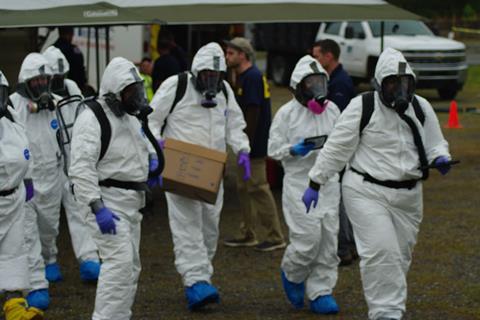New sampling technologies developed for environmental sampling can be adapted for use in the event of a bioterrorism attack, allowing responders to rapidly trace aquatic anthrax contamination in the field.
This finding could save valuable time and money for emergency responders, according to Dr Katherine Ratliff, physical scientist with the US EPA Office of Research and Development.
The study, ‘Impact of Filter Material and Holding Time on Spore Sampling Efficiency in Water’ appears in Letters in Applied Microbiology, an Applied Microbiology International publication.

“If a bioterrorism agent were spread over a wide outdoor area, much of that contamination could end up in our water,” corresponding author Dr Ratliff explains.
“To understand where the contamination has traveled, responders would need to collect and transport large volumes of water samples to the laboratory for analysis, presenting logistical and safety challenges.
“The US Environmental Protection Agency’s Homeland Security Research Program (HSRP) has developed an innovative approach using commercially available water filters that can be used effectively in the field without the need for immediate laboratory analysis. This significant finding could save money and time for emergency responders who rarely have much of both.”
Anthrax spores
In the study, HSRP evaluated three different types of commonly available membrane filters - cellulose acetate, cellulose nitrate, and nylon - to determine how effective they were in filtering surrogates for Bacillus anthracis spores from water.
These filters were chosen because they would allow physically smaller samples, representing the contents of potentially contaminated water, to be collected on-site and transferred for analysis. The cellulose nitrate filters were found to be most efficient at sampling spores from contaminated water.
Further study of this filter also determined that samples could be held for up to a month before analysis without a detrimental impact to the samples.
This ability to hold on to the filters for an extended period before analyzing them is important, because laboratory throughput for analyzing samples may be limited immediately following a bioterrorism incident.
“The results show that new types of sampling equipment being developed for the field of environmental (eDNA) sampling, which utilize water filtration, could be adapted for a bioterrorism contamination incident,” Dr Ratliff says.
“Their use could enhance sample collection and facilitate remediation activities critical to recovery while reducing the cost.”
Future work will compare filter and water sampling in a field study to see how these filters fare using dirtier water.
This study was led and supported by EPA’s HSRP and is published in Letters in Applied Microbiology (link).







No comments yet